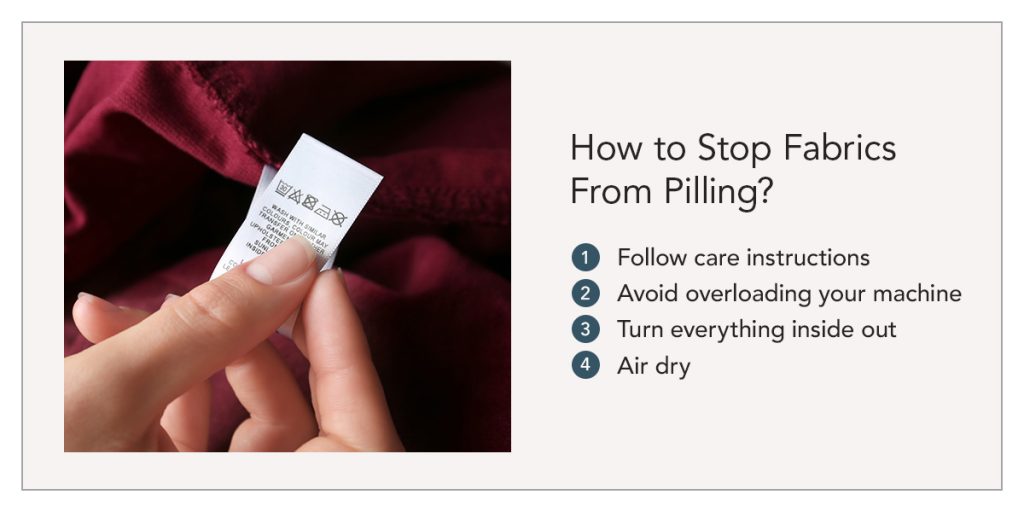While many people see pilling as a sign that a material is at its end, this is not true. Pilling is a common issue with some fabrics. It is the formation of small balls of fiber on the surface of certain fabrics. This can affect various types of materials, especially those consisting of synthetic blends or fibers.
Factors like abrasion from everyday use, material or textile type and other environmental conditions contribute to pilling. Understanding how this occurs, which fabrics tend to pill more and how you can safely remove pilling can help extend the life of most materials.
Pilling is caused by friction and happens when loose fibers on a fabric surface tangle together to form small lint balls, clusters, or breaks. So why does fabric pill? Several factors can lead to pilling in certain fabrics. The primary causes include:
No. Pilling can happen no matter how well you look after your furniture, blankets or pillows. Even cashmere will pill a lot, and this is a high-quality material. It is more noticeable on fabrics made from tightly woven materials or those containing shorter fibers. High-quality material with longer fibers or tighter weaves will show less pilling, and removing pilling from these fabrics is easier.
Determine which materials are more prone to pilling by understanding the content of various fabrics, like synthetic, woolen and cotton. Fabrics made from synthetic fibers or blends may pill more than natural fibers. Synthetic fibers are often shorter, making them more prone to breakage and entanglement, which leads to pilling. Lower-quality fabrics or fabrics with loose weaves are also prone to pilling. Here are some specific materials that are more prone to pilling:
Start with reading labels if you want to opt for less prone-to-pilling fabrics. Synthetic fiber pills are challenging to remove, as they easily create loose threads. Conversely, natural fiber pills are easier to take off. Look for knitted material with acrylic, as these short, straight fibers also create a lot of pills.
Manufacturers use three test methods for fabric pilling:
Performance fabrics are made to endure frequent use and exposure to tough demands. Our Bella Dura™ and Bella Dura™ Home fabrics are durable and pill-resistant. We use our exclusive proprietary solution-dyed polyolefin yarn, which is pill-resistant, unlike competitor fabrics like acrylics. Additionally, this fabric is woven in the United States, starting as a by-product and ending as a fully recyclable fabric.
While you may be unable to prevent fabric pilling altogether, you can delay it. Addressing the causes of pilling is essential to maintaining the appearance and quality of your fabrics. The likelihood and severity of pilling depend on fabric quality, care and construction. To lessen pilling on materials, use these methods:

Natural fabrics’ pilling is some of the easiest to remove. Removing any pilling you see regularly can help to lessen the occurrence over time. You will notice that newer fabrics may tend to pill more than older fabrics because new material has more excess fibers. You can try these methods to get fabrics to look as good as new again:
Removing pilling is often time-consuming, but the results are worth the effort. After removing the pilling from the material, steam it and spray some fabric softener mixed with water. Doing this will leave the fabric feeling as good as new.
Pilling can affect various items, from furniture and bedding to curtains and rugs. When you understand what causes pilling, you can work toward preventing this from happening. Additionally, you can choose materials less prone to pilling or offer easy pill removal.
Swavelle Group produces durable upholstery fabrics. Companies use our products in home goods, corporate settings, health care facilities and more. We use multiple sustainable manufacturing practices for custom-made textiles. Enjoy one-on-one attention, excellent services and quick turnaround times when shopping with Swavelle Group. Contact us today for fabrics or to learn more about our services.
